Holocene
Type of resources
Topics
Keywords
Contact for the resource
Provided by
Years
Formats
Representation types
Update frequencies
-
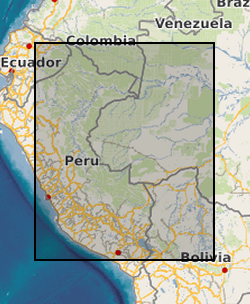
The dataset is the output of a NERC fellowship aimed to understand the long-term dynamics of tropical vegetation through palaeoecological analysis. For doing this, two sedimentary archives (Laguna Pindo and Laguna Baños) from Ecuador were radiocarbon dated and analysed for pollen, non-pollen palynomorphs, charcoal, chironomids, stable isotopes and XRF of tephra deposits. Each proxy was analysed at different resolution. Laguna Pindo is a mid-elevation lake (1250 m asl) that spans the last 50,000 years. Laguna Baños is an Andean lake located at 3800 m asl and contains sediments representative of the last 6500 years. Both water bodies are very shallow. The data is presented mainly in excel spreadsheets as raw data (except for radiocarbon dating data, which are the PDF files provided by NRCF), without any math treatment or conversion. Publication associated with NERC grant, Frazer Matthews-Bird, Stephen J. Brooks, Philip B. Holden, Encarni Montoya, and William D. Gosling (2016), Inferring late-Holocene climate in the Ecuadorian Andes using a chironomid-based temperature inference model. Clim. Past, 12, 1263-1280, 2016. doi:10.5194/cp-12-1263-2016
-
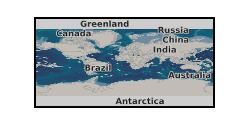
A new family of spherical harmonic geomagnetic field models spanning the past 9000 yr based on magnetic field directions and intensity stored in archaeological artefacts, igneous rocks and sediment records. The pfm9k geomagnetic field models and datafiles as well as the individual bootstraps of the pfm9k.1b geomagnetic field model presented in A. Nilsson, R. Holme, M. Korte, N. Suttie and M. Hill (2014): Reconstructing Holocene geomagnetic field variation: new methods, models and implications. Geophys. J. Int., doi: 10.1093/gji/ggu120 are included here.
-
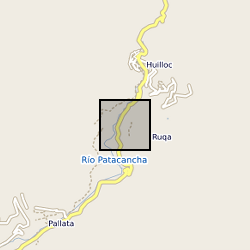
Concentration and accumulation palaeoenvironmental proxy data derived from a 6.3m sedimentary core drilled at Marcacocha, a present-day wetland (formerly a small lake) located at 3355m above sea-level in the Cordillera Oriental of the Peruvian Andes. Multi-proxy analysis of the sediments at decadal to sub-decadal temporal resolution has provided detailed datasets that include sedimentology, palynology, geochemistry, plant macrofossils, diatoms and oribatid mite remains (Chepstow-Lusty et al., 2003, 2007, 2009; Sterken et al., 2006). Select data are presented here relating to the uppermost 1.9m of the sequence (ca. the last 1200 years). The data relate specifically to: Chepstow-Lusty, A., Frogley, M.R., Baker, A.S. Comparison of Sporormiella dung fungal spores and oribatid mites as indicators of large herbivore presence: evidence from the Cuzco region of Peru. J. Arch. Sci. https://doi.org/10.1016/j.jas.2018.12.006 Chepstow-Lusty, A., Bennett, K., Fjeldså, J., Kendall, A., Galiano, W., Tupayachi Herrera, A., 1998. Tracing 4000 years of environmental history in the Cuzco area, Peru, from the pollen record. Mt. Res. Dev. 18, 159–172. Chepstow-Lusty, A., Frogley, M.R., Bauer, B.S., Bush, M.B., Tupayachi Herrera, A., 2003. A late Holocene record of arid events from the Cuzco region, Peru. J. Quat. Sci. 18, 491–502. Chepstow-Lusty, A., Frogley, M.R., Bauer, B.S., Leng, M., Cundy, A., Boessenkool, K.P., Gioda, A., 2007. Evaluating socio-economic change in the Andes using oribatid mite abundances as indicators of domestic animal densities. J. Arch. Sci. 34, 1178–1186. Chepstow-Lusty, A.J., Frogley, M.R., Bauer, B., Leng, M.J., Boessenkool, K.P., Carcaillet, C., Ali, A.A., Gioda, A., 2009. Putting the rise of the Inca empire within a climatic and land management context. Clim. Past 5, 1–14. Sterken, M., Sabbe, K., Chepstow-Lusty, A., Frogley, M., Vanhoutte, K., Verleyen, E., Cundy, A., Vyverman, W., 2006. Climate and land-use changes in the Cuzco region (Cordillera Oriental, South East Peru) during the last 1200 years: a diatom based reconstruction. Arch. Hydrobiol. 165, 289–312.
-
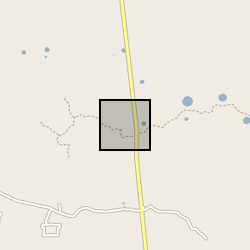
Dataset contains an interannual to sub centennial resolution record of carbonate oxygen and carbon isotopes, bulk sediment geochemistry and sedimentology from a 2.95 metre-long core (YC2) from Yaal Chac. The core was dated using a combination of radiocarbon dates and short-lived radio-isotopes. Data are presented in Metcalfe et al (2022) Quaternary Science Reviews https://doi.org/10.1016/j.quascirev.2022.107445
-
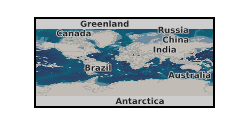
Data derived from NERC Grant NE/N001621/1. Geographical Area - DSDP/ODP/IODP Sites 516, 1138, 925, 242, 1338, 871, 872
-

Antarctica and its ice sheets have played, and continue to play, a major role in the global ocean-atmosphere system, hence, it is critical that we have a sound understanding of the past behaviour of Antarctica and it's ice sheets with a view to understanding their potential future variability under a warming climate. The Southern Ocean is a key component of the thermohaline circulation of the world's oceans and the re-distribution of heat and salt around the oceans is integral to processes that regulate rapid climate transitions. Computer modelling results have shown that sufficient melt water input to the Antarctic continental shelf area is capable of shutting down the formation of cold, salty deep water in Antarctica hence upsetting the balance of the thermohaline circulation and the ocean-climate system of the Northern Hemisphere. In order to further investigate these processes that originate in Antarctica, it is necessary to understand the transfer mechanisms of ocean-climate signals from the Antarctic ice sheets, across the continental margin seas, into the Southern Ocean. Exceptionally well-preserved Antarctic margin sediment cores, recovered during the last decade, contain an excellent archive of these ice-ocean-climate interactions, often on seasonal timescales, from the end of the last ice age and throughout the recent warm interglacial (the Holocene). The cores are seasonally layered through the deglaication, intermittently layered through the Holocene, and the layers are dominated by fossil planktonic diatoms (algae); individual species of which are sensitive to sea surface conditions including sea ice concentration, fresh water influx, and open ocean influence upon the margin. Following the last ice age, these Holocene Antarctic sediments record climate fluctuations of tens to thousands of years long and whatever environmental forcing mechanism is responsible for these fluctuations, the changes are likely to be felt in the Antarctic coastal regions first, and the cores proposed for this research are located in prime positions to record these changes. Diatom oxygen isotope measurements represent an under-utilised technique that provides a means of obtaining oxygen isotope records in high latitude environments. The measurement of oxygen isotopes in diatoms is a widely used proxy in the study of the history of lakes, however, to date there have been many fewer attempts to use records of diatom oxygen isotopes in the oceans. Studies that have taken place have demonstrated the sensitivity of diatom oxyegn isotope measurements in polar and sub-polar waters to changes in surface ocean environmental parameters such as salinity, freshwater input and sea surface temperature. The research proposed here will be the first attempt to produce diatom oxygen isotope records from the Antarctic margin, a region sensitive to the waxing and waning of the Antarctic ice sheets in terms of melt water through-put to the Southern Ocean. We propose to investigate the evolution of seasonality along the Antarctic margin since the last ice age, and also the processes involved in producing the sediment record, by relating diatom oxygen isotope measurements on season-specific diatom taxa (i.e. diatom species that thrived particularly in spring or autumn) to relative freshwater influx to the coast, from either melted terrestrial ice or sea ice. We also hope to show that the diatom oxygen isotope measurements will be low at the end of the last ice age, as a large quantity of old ice sheets were melting, and will be higher during warmer time periods of the Holocene when ice sheets were at a minimum.
-
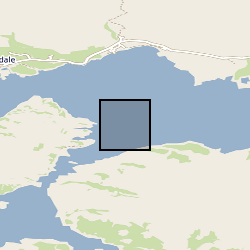
Geochemical data for the upper 300cm of giant piston core MD04-2832. Core MD04-2832 was collected from the middle basin of Loch Sunart a fjord on the west coast of Scotland from the research vessel Marion Dufresne on the 15th of June 2004. This data resource includes five data sheets: (1) Geochemical data, (2) Bulk radiocarbon, (3) ICP-MS, (4) FRUITS and (5) Age Model. 1. Geochemical data sheet includes Bulk elemental data (Organic Carbon, Nitrogen, C/N ratio, N/C ratio), Isotopic data (δ13C and ẟ15N), Biomarker data (Alkanes, Fatty Acids, GDGT's) and thermosgravimetric data (% labile, recalcitrant and refractory organic matter). 2. Bulk Radiocarbon data sheet includes bulk radiocarbon data for ten sediment samples presented as % modern, 14C Age (years BP), ẟ14C and Δ14C. 3. ICP-MS data sheet includes metal data associated with mining activities within the fjords catchment. Data includes Zinc (Zn), Lead (Pb), Copper (Cu), Barium (Ba), Aluminium (Al) and elemental ratios of these metal normalized with Al concentrations. 4. The FRUITS data sheet contains the outputs from the FRUITS Bayesian isotopic mixing model (Fernandes et al., 2014) used to constrain the source (terrestrial vs marine) of the organic carbon found at site MD04-2832. The model used bulk elemental ratios (N/C), Isotopic (δ13C and ẟ15N) and biomarker data (GDGT - BIT Index) to calculate the terrestrial and marine OC fraction from each downcore sample. 5. The Age Model datasheet contains the age model produced by the BACON software package (Blaauw and Christen, 2011). The age model was developed with a combination of shell/foraminifera radiocarbon dates and radiometric dating (210Pb and 137Cs). Further details on the data can be found in Smeaton, C., Cui, X., Bianchi, T.S., Cage, A.G., Howe J.A., Austin, W.E.N., (2021), The evolution of a coastal carbon store over the last millennium, Quaternary Science Reviews.
 BGS Data Catalogue
BGS Data Catalogue